A Pile of Random Sweepings
Critic Mary Coyne looks into the unlikely juxtapositions, uncanny histories, and symbolic gestures of a new, collaborative exhibition of work by artists Peter Happel Christian and David Ruhlman.
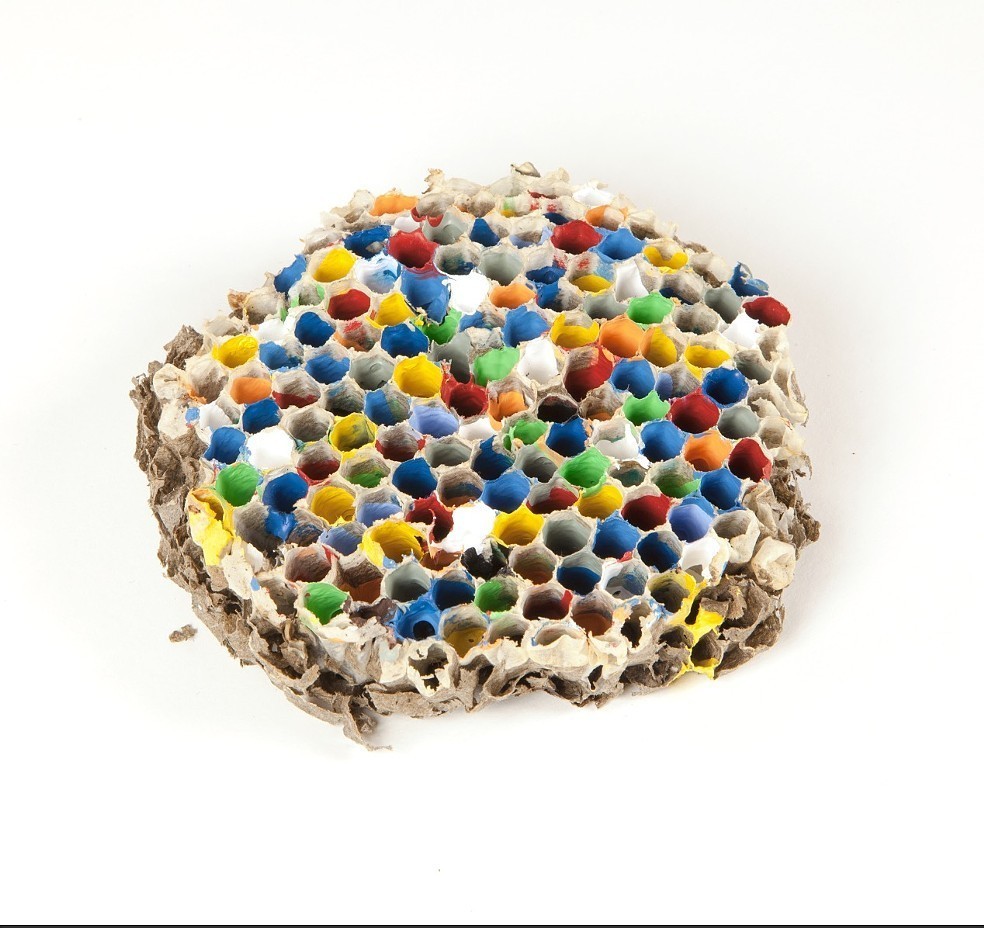
Infinite Field, a two-person show by Peter Happel Christian and David Ruhlman currently on view in Saint Cloud’s Gallery St. Germain, is an ambitious, detailed and whimsical exhibition that demonstrates a clear investment in collaborative practice. A true test of any good collaboration, the work in the show is not immediately identifiable by author. There’s a sense of discovery of some not-quite known, slightly uncanny history that pervades the show. Ruhlman’s paintings derive from early American religious folk art and a Dada-ist use of seemingly meaningless textual assemblages. Happel Christian’s black and white photographs of a sawhorse arranged and rearranged within a wooded glen. Despite, admittedly being more familiar with Happel Christian’s work, the pieces I had know had been visually, and in some cases physically, altered so as to be incorporated into the language of the co-presentation.
The collaboration came about, as many such things do, by way of a chance conversation last Fall. In talking, both artists found they were examining similar themes in their current work–parallel practices which had up until recently existed independently within the same small arts community. The resulting exhibition encompasses projects both artists have developed independently over the past year; their collaboration came to fruition in the weeks leading up to the exhibition when the two artists came together and began rethinking both the materials and display of their existing pieces. It was then that their underlying similarities emerged fully into view, tangent interests that intersected an unexpected visual crossroads.
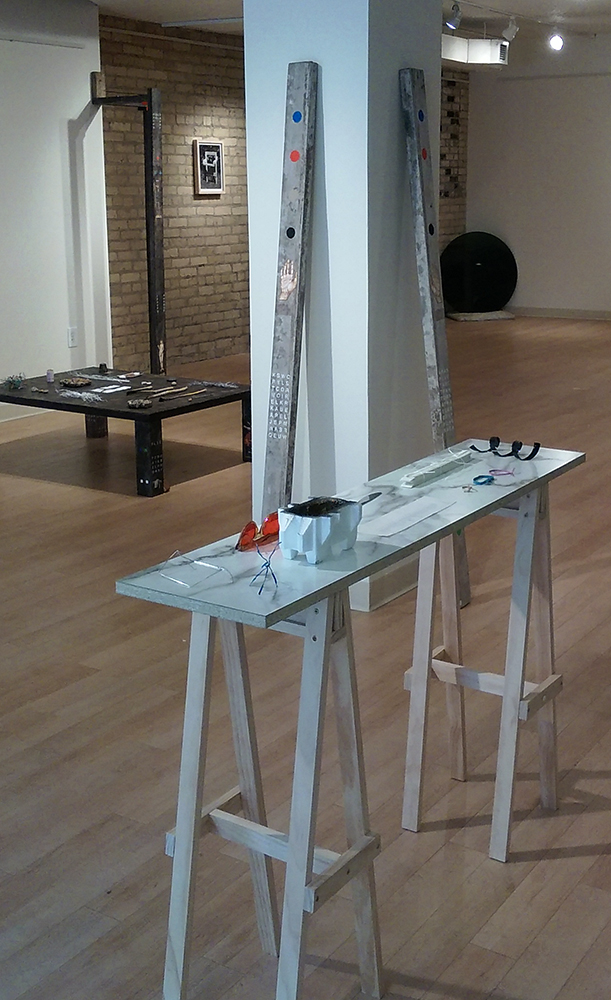
This easy confluence into a shared aesthetic is most successfully developed in Either/ Or (2016) — a low wooden table Ruhlman constructed, weathered, and painted and upon which Happel Christian has placed an array of small objects, both found and constructed by hand. The visual conversations between the symbolic images painted on the table’s legs with the talismans placed atop seem at once accidental and completely intentional, in the way offerings at a temple, despite their diversity in manner and origin, all nonetheless fundamentally belong, united in unseen but common intent. Ruhlman’s diagonal plane is turned horizontal, a structure that becomes a platform which not only provides a support for the work, but becomes part of it. The placement of each object — twisted aluminum ties, bones, rocks — creates formal, spatial relationships among them that suggest some purpose, much the same way rock and pine cone clusters do when found on New England rambles. They’re akin to shards left in an archaeological site; we dare not disturb them lest we jumble the narrative history embedded in their arrangement to one another.
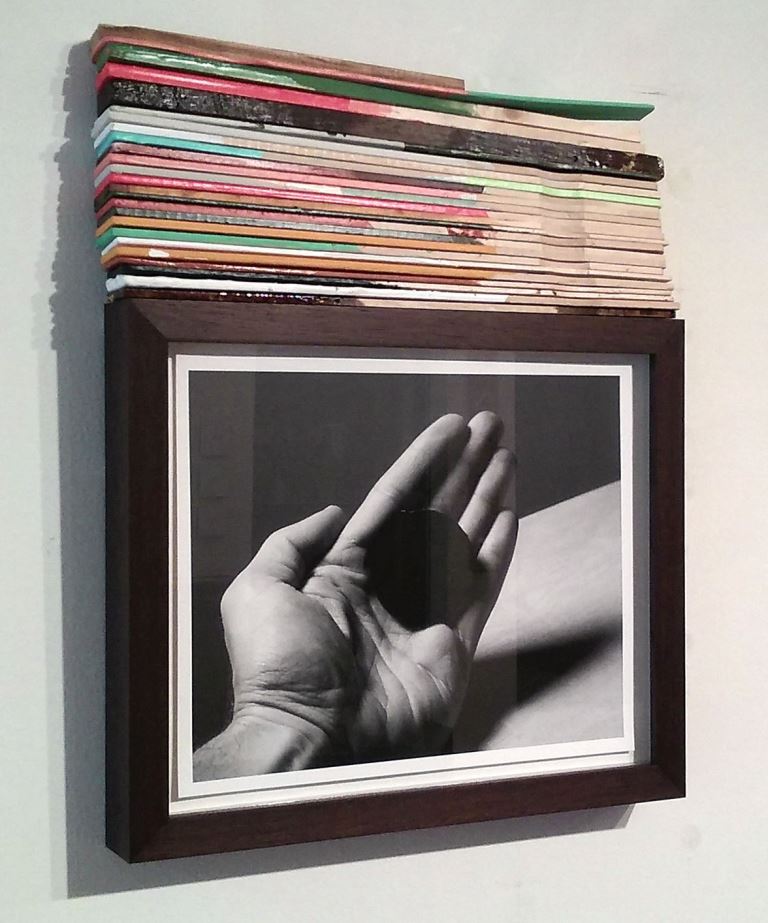
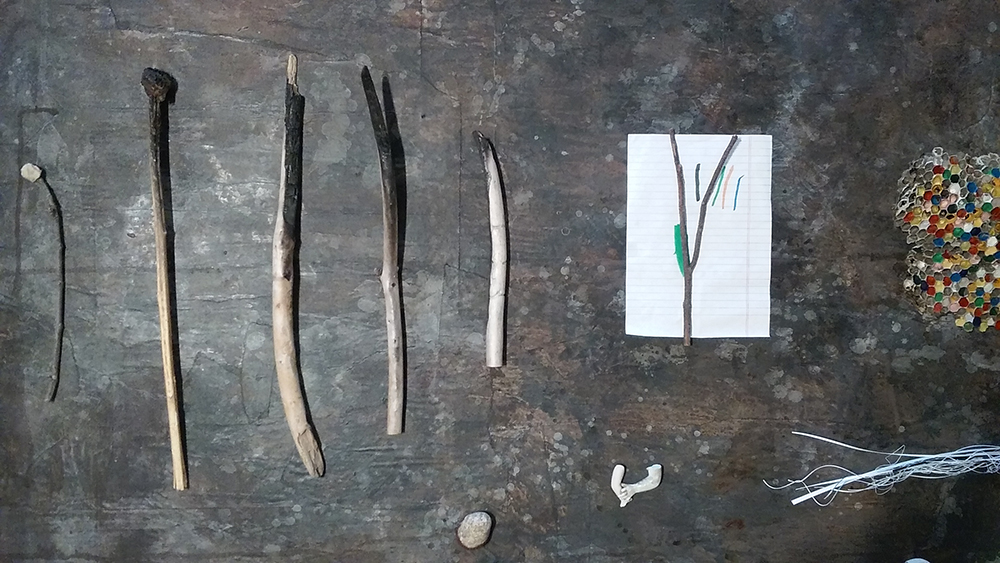
Infinite Field, installation view, Gallery Saint Germain. Courtesy Peter Happel Christian. 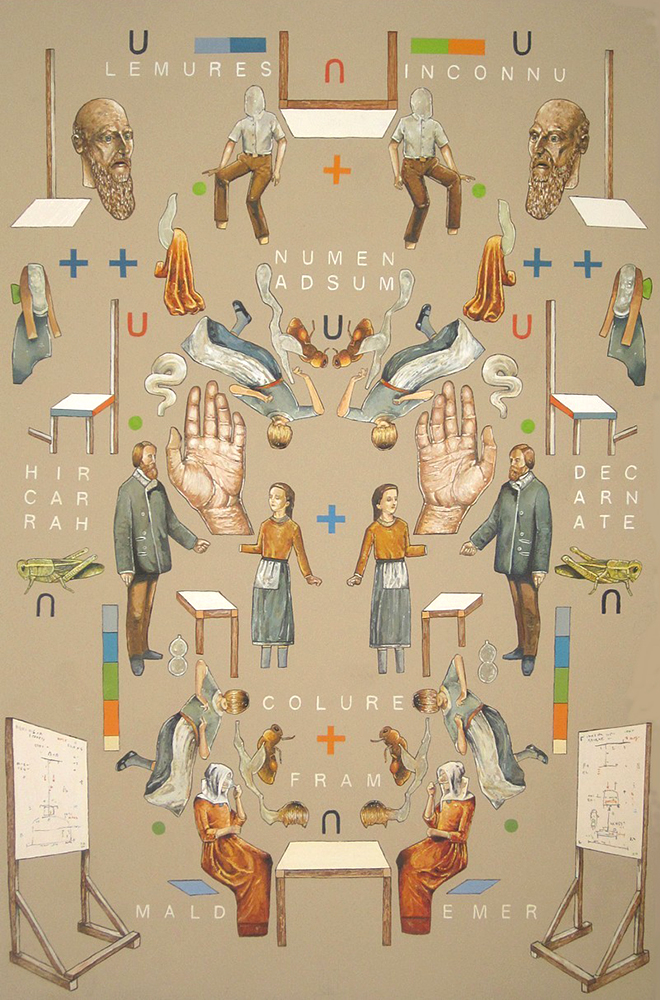
David Ruhlman, The Fox sisters receive the first 12 letters. Image courtesy Peter Happel Christian.
The weathered wooden panels and beams for Ruhlman’s Soot Circle Swirling (2016) intersperse the space and are echoed in Happel Christian’s sawhorses — simple, utilitarian forms the artist analyzes and repurposes here repeatedly. Expanding his practice from the photographic print, Happel Christian’s sawhorses also occupy the space as platforms, in one instance as visible supports for a polished, round, black mirror resting on a sheet of plexi (Infinite Field IV ) (2015). Bending under the combined weight of the mirror and the plexi, the sawhorses fail as a display device; as a sculptural units, the sawhorses equally inhibit a viewer’s attempt to look directly into the black mirror to see their reflection. The mirror — repeated at the other end of the gallery, where another large, black mirrored disc hovers, alien-like — nods to Happel Christian’s interest in photographs that expand beyond a print on paper. One reading of the work points to the black mirror’s use in occult practices (to foresee the future, say, or to conjure past spirits), in which the user also abstains from seeing himself in the reflection. Seen in that light, Happel Christian’s mirrors function as a response to Ruhlman’s use of the imagery of myth and symbolism. The black mirror also returns us to Happel Christian’s photographic practice; mirrors were used as a reflective device by early landscape painters. Despite their polished surfaces, mirrors so used retain an aesthetic of the found site, of tools or objects waylaid by time and cultures long past.
This sense of displacement of time and place in the joint exhibition of work is successful is in its simplicity. The artists do not create a narrative fantasy or attempt to imbue the objects with some set complex meaning. The relationships of Ruhlman’s repeated figures on the plane create a semblance of language, expanding outward and reiterated on the planar tables as images and as physical objects within the space. Happel Christian’s twisted aluminum ties, stacked paper, or bits of twisted metal are almost absurdly honest, presenting themselves as straightforward material studies on a horizontal plane. A Polaroid photograph so placed on a marble slab seems as much a part of the same family of minutiae as are the knife and ties placed alongside it. The medium fades away into this shared collection, like a Heraclitian “pile of random sweepings.”
This formal play of repetition, interpretation, and exchange grounds the exhibition with an intentionality, a well developed visual and symbolic sensibility, that’s all the more unexpected considering the artists’ chance collaboration was the work of only a few months. I’ll look forward to seeing what each of these artists, working together or apart, might share next.
Related exhibition information: Infinite Field, a two-person exhibition of work by Peter Happel Christian and David Ruhlman, is on view at Gallery Saint Germain in St. Cloud, MN through March 5, 2016.